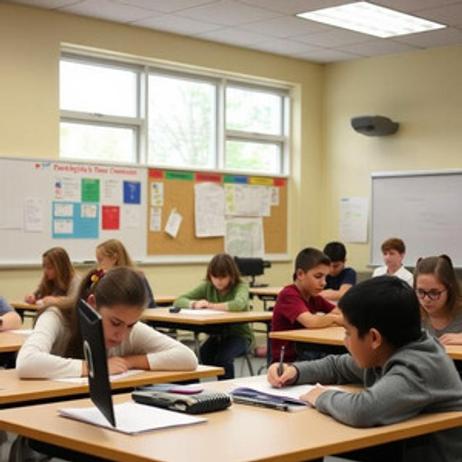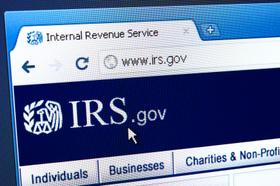What Is an Independent School?
In the landscape of U.S. K-12 education, the term independent school is often used alongside, and sometimes interchangeably with, private school. Yet, for parents, students and educators seeking clarity in 2025, it’s useful to distinguish what sets an independent school apart and why that matters.
Defining the Term
At its core, an independent school is a private, non-government school that is self-governing and self-funding. According to the National Association of Independent Schools (NAIS), independent schools “provide students with individualized attention … are independent in governance and finance.”
More specifically:
Governance: Independent schools are governed by a self-perpetuating board of trustees or governors, rather than by a church diocese, public school district, state agency, or for-profit entity.
Finance: They are financially independent of public funding, relying primarily on tuition, gifts/endowments and charitable contributions, giving them freedom in program design and operations.
Mission-driven: Independent schools typically follow their own mission, curricular design and admission policies rather than public-school or diocesan mandates.
In short, while all independent schools are private schools, not all private schools are independent in this specific sense. This distinction helps families understand what they are choosing.
Why the Distinction Matters
For many parents and educators, what sets an independent school apart is the increased flexibility in curriculum, staffing, facilities and culture. For instance:
Independent schools often hire faculty based on subject-expertise rather than strictly state certification requirements. usm.org
They tend to have smaller class sizes, lower student-teacher ratios and more robust financial-aid programmes, which support socio-economic diversity.
The autonomy of independent schools allows them to innovate — for example, in project-based learning, global programmes, and interdisciplinary study — without the constraints of public-school mandates.
Historical Context and Purpose
Independent schools in the U.S. have roots in mission-based education, founded by religious or philanthropic groups in the 19th and early 20th centuries. Over time many evolved into secular or broadly inclusive institutions committed to college-preparatory or liberal-arts-oriented programmes. The underlying purpose has been to offer education alternatives — in philosophy, pedagogy, class size or values — that differ from public provision. NAIS
Today, that purpose persists: providing families with choice, enabling schools to define their own identity and meeting students’ varied learning needs in ways public systems may not.
Key Characteristics of Independent Schools in 2025
Mission & Governance
Independent schools typically publish a distinctive mission statement and embed it in all aspects of school life: from admissions and curriculum to co-curricular programmes and community service. Governance is handled by a board that brings strategic oversight, fiduciary responsibility and a long-term view of institutional health — endowment, capital planning, staffing and mission sustainability. thepineschool.org
This governance model fosters continuity and independence, enabling schools to make long-range plans for technology, facilities, and educational innovation.
Funding & Tuition
Because independent schools are tuition-driven and donor-supported, tuition remains a significant part of their revenue picture. According to recent data:
The median tuition for U.S. private day schools is around $35,105/year for high school students in 2025. RaiseRight
For boarding schools, the full cost (tuition plus room & board) is often between $60,000–$80,000/year for top campuses.
On average, private schools (not necessarily independent) enrol about 9% of K-12 students in the U.S. (4.7 million in fall 2021) and their share has been relatively flat in recent years.
Importantly, many independent schools offer substantial financial aid and scholarship programmes to ensure access — a key component of their mission to foster inclusive communities.
Student Body & Size
Independent schools tend to be smaller: many have fewer than 300 students and maintain favourable student-teacher ratios. According to a 2025 market-brief, more than 44% of private schools had under 300 students.
These smaller scale settings often enable deeper relationships among students, staff and families, and facilitate school cultures centred on mentorship, advisory systems and individualized support.
Curriculum & Staffing
Independent schools often enjoy curricular freedom: rather than adhering strictly to state-mandated programmes, they may offer advanced placement (AP), International Baccalaureate (IB), dual-enrollment university courses, or bespoke experiential education. Faculty hiring criteria may emphasise expertise, mentorship capacity and fit with the school’s mission, not just state licensure.
For families seeking comprehensive preparation for college and beyond, this flexibility can be a significant advantage.
Trends & Insights for 2025
Enrollment & Market Position
While independent (and private) school enrollment remains a minority of the market, the sector is evolving. According to the EdWeek Market Brief, private schools enrol about 10% of K-12 students nationally — with variation by region.
Enrollment growth appears modest but steady; one study by the Cato Institute indicates that private-school enrollment continued to rise in 2024–25, though at a slower pace than during the immediate post-pandemic years.
These trends suggest that while independent schools are not the dominant segment, they hold a stable and valued niche in the educational ecosystem.
Tuition Inflation & Financial Aid
Tuition increases remain near or slightly above inflation, particularly among boarding schools and elite independent day schools. For example, some 2024-25 top boarding school tuition fees exceeded $70,000/year.
However, independent schools have increasingly emphasised access and affordability: many now prioritise financial-aid programmes, income-based guidance and strategic scholarships to diversify their student bodies — aligning with the founding mission of choice and excellence.
Value Proposition & Differentiation
In the eyes of parents in 2025, independent schools differentiate themselves via:
Smaller communities and tighter student-faculty relationships
Mission-based culture and values alignment
Flexibility in curriculum and extracurricular programmes (e.g., global travel, internships, independent research)
College-preparatory outcomes and alumni networks
These features are underscored by independent schools themselves. As one school’s website puts it: “Independent schools are independent in two critical ways: governance and finance. That independence gives freedom to choose. ” thepineschool
Challenges & Considerations
Despite their strengths, independent schools face several challenges in 2025:
Access and equity – ensuring that tuition and socio-economic barriers don’t exclude students and families who would benefit.
Diversity and inclusion – reflecting broader racial, cultural and economic diversity in the student body and faculty.
Demographic headwinds – with some regions facing declining school-age populations, independent schools must sustain enrolment and mission viability.
Competitive costs – families weigh tuition vs return, and independent schools must clearly articulate their value.
Real-World Example: Independent School in Action
Consider the case of a fictitious school, Riverside Independent Academy (RIA). Founded in 1965, RIA is governed by a board of 12 trustees, operates on a non-profit basis, and enrols 450 students in grades 6-12 with an average class size of 14. RIA emphasizes experiential education: students complete a community-impact project, a semester-long urban sustainability lab and a global exchange programme. Tuition for 2025 is approximately $38,000/year, and 40 % of students receive need-based assistance.
For a family seeking smaller classes, individualised mentoring and global exposure, this independent school offers a differentiated choice compared to local public or diocesan schools.
How to Evaluate an Independent School
For families exploring independent schools, here are key questions and evaluation lenses:
Mission fit – What is the school’s mission? Does it align with your child’s needs and your family’s values?
Governance & financial health – Is a governing board clearly described? Does the school publish endowment, annual giving, tuition/aid data?
Academic and co-curricular programmes – What curriculum is offered? How many courses, electives, IB/AP or other advanced options? What experiences outside the classroom?
Tuition & financial aid – What is the sticker tuition? What proportion of students receive aid? How accessible is aid for middle-income families?
Student-faculty ratio & community culture – What are class sizes and the overall student-teacher ratio? What is the sense of community in the school?
Outcomes & post-graduate success – What do alumni go on to do? How does the school report college admission, gap-year outcomes or career readiness?
Diversity & inclusion – What is the racial, economic and geographic diversity of the student body and faculty? What supports exist for inclusion?
Fit and logistics – Is the school day and calendar compatible with your child’s personality and your family’s schedule? Is location, transportation and sibling placement viable?
Exploring these dimensions will help you determine whether an independent school is the right fit for your child and family. For deeper comparisons, you may also consult resources such as BoardingSchoolReview.com for boarding-school options.
Summary
An independent school represents a distinctive option within the U.S. educational landscape: non-public, self-governed and mission-driven. In 2025, while they remain a minority of all K-12 enrolment, independent schools offer families meaningful choice in terms of governance, curriculum, culture and community. For those seeking smaller scale, individualized learning, strong college preparation and a well-defined mission, independent schools can provide an attractive alternative — provided families carefully evaluate cost, fit and long-term value.
By understanding the governance, funding, academic characteristics and current trends of independent schools, parents and educators can make informed decisions about whether this type of institution aligns with their educational goals.












